10 /10 1 Votes
Designer(s) Stephen Radosh Composer(s) Jack Levy | 5/5 Emuparadise Producer(s) Michael Ahn Artist(s) Mirena Kim Initial release date 5 April 1994 Genre Puzzle video game | |||||||||||||||||||||||||||||||||
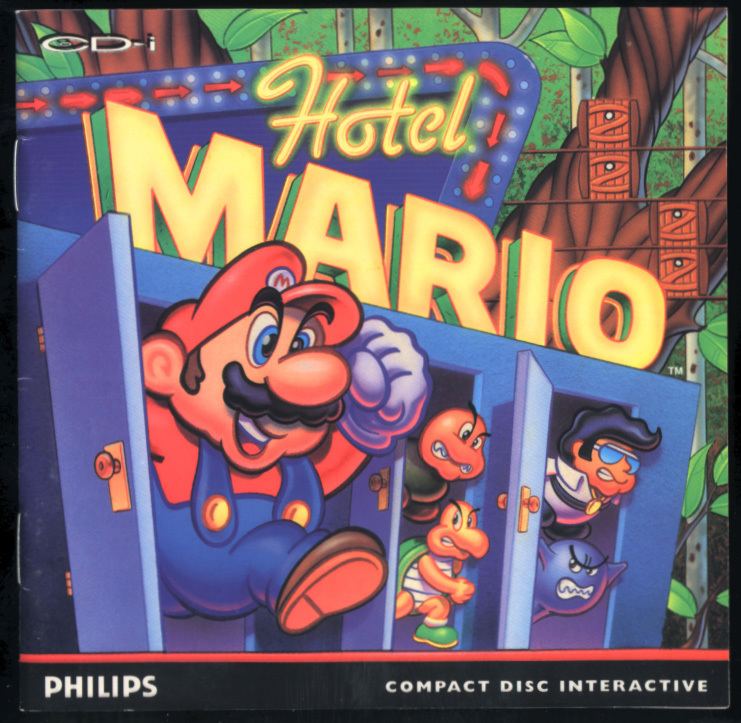 | ||||||||||||||||||||||||||||||||||
Developers Fantasy Factory, Philips Interactive Media, Philips Fantasy Factory Publishers Philips, Philips Interactive Media Similar Mario Series games, Puzzle video games | ||||||||||||||||||||||||||||||||||
Cd i part 1 hotel mario angry video game nerd episode 59
Hotel Mario is a computer puzzle game developed by Fantasy Factory and published by Philips Interactive Media and Nintendo for the Philips CD-i in 1994. The primary character of the game is Mario, who must find Princess Toadstool by going through seven Koopa hotels in the Mushroom Kingdom. Every hotel is divided into multiple stages, and the objective is to close all doors on each stage. Defeating a Koopaling on the hotel's final stage takes the player to the following building.
Contents
- Cd i part 1 hotel mario angry video game nerd episode 59
- Hotel mario 6 youtube poop exe game
- Gameplay
- Plot and setting
- Development
- Reception
- References
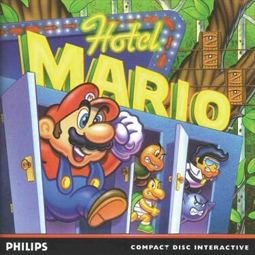
After Nintendo decided not to have Sony create an add-on for the Super Famicom/Super NES, they gave Philips permission to use their characters in games for Philips' CD-i.
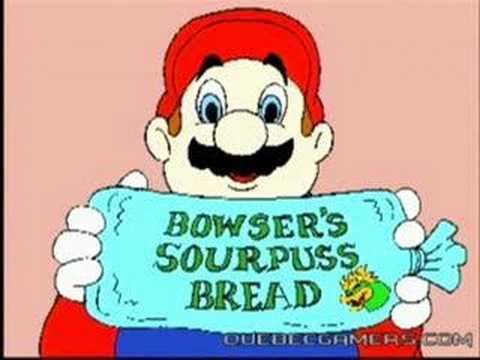
The games resulting from the license were widely criticized, with Hotel Mario being regarded as one of the worst Mario games and one of the worst video games ever, due to the animation of the shutting doors, the unresponsive controls and especially known for the cutscenes that used full motion video.
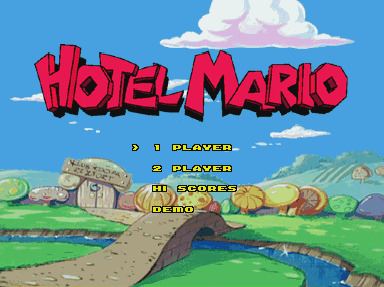
Hotel mario 6 youtube poop exe game
Gameplay
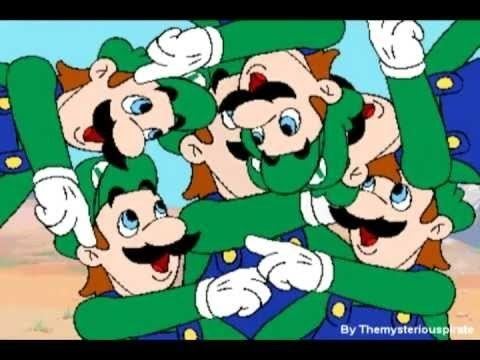
Controlling Mario, or his brother Luigi in two-player mode, the player has to complete all stages of the seven hotels in the game. The first six hotels contain 10 stages, and the last contains 15 stages. Progressing from one stage to the next requires the player to shut every door shown in stage, without exceeding a given time limit. The purpose of closing the doors to progress is not explained.
Elevators, which operate differently depending on the hotel, enable the player to go between the five floors of the stage. The faster a stage is cleared, the more points will be given to the player. Every stage has its own title screen via which the game can be saved. The screens are also used to enter previously played hotel stages and the map of the Mushroom Kingdom, which allows the player to access any visited hotel.
While trying to close the doors, the player must avoid certain hazards. Mario will lose a life if he touches an enemy, runs out of time, runs off the edge of the floor he is on, or if all the doors are open. Enemies in the game are mostly regular Mario series creatures, such as Goombas, Koopas, Boos and their variations. The opponent on the last stage of each hotel is one of the Koopalings, who each use different methods to attack Mario.
In his normal state, Mario can tolerate one hit from an enemy and defeat most of the foes with a stomp. By opening doors the player can find power-ups which grant different abilities. A Super Mushroom transforms Mario into Super Mario, with glowing overalls and the strength to withstand two enemy hits. If the player finds another mushroom while Mario is in the Super Mario form, the item turns into a Fire Flower. When grabbing it, Mario becomes Fire Mario and can throw fireballs to eliminate enemies. A 1-up mushroom known as "Extra Mario Mushroom" or "Toad" can only be found by Fire Mario. Another way to earn an extra life is collecting 30 coins. The player can also obtain a Star Man, which makes Mario temporarily able to knock any enemy off the screen by simply touching them.
Plot and setting
The game takes place in the Mushroom Kingdom, which Bowser has turned into a hotel resort for the use of himself and his children, renaming the land "Klub Koopa Resort". Each hotel in the area is guarded by one of the Koopalings and their henchmen. The hotels represent different building types with various locations, including a tree, a mine and a cloud.
Having been invited for a picnic by Princess Toadstool, Mario and Luigi enter the Mushroom Kingdom. At the entrance, however, they find a message from Bowser. He reveals that he has taken control over the kingdom and established seven hotels there, at one of which Princess Toadstool is being held as a "permanent guest". As they visit the first six hotels, Mario and Luigi find the Princess several times, but on every occasion she disappears out of their sight, ending up in another hotel. They eventually enter a palace where Bowser himself resides. With the hotel's owner defeated, the brothers flee the building with Princess Toadstool before it collapses. The Princess, now able to rule her kingdom in peace, thanks the Mario brothers, giving them both a kiss.
Development
In May 1991, following an unsuccessful attempt with Sony to develop a CD-ROM-based add-on for the Super Nintendo Entertainment System, Nintendo signed a deal with Philips to develop the aforementioned add-on. However, witnessing the poor reception of the Sega Mega-CD, Nintendo no longer considered the add-on profitable, and the project was scrapped entirely. As part of dissolving the deal, Nintendo gave Philips the license to use five of their characters, including Mario, Luigi and Princess Toadstool, to be featured in their games for the CD-i. The games were given little time to be developed and little funding, and Nintendo only gave cursory input. Philips used the characters to create games for the CD-i, with Nintendo taking no part in their development except to give input on the look of the characters. Apart from Hotel Mario, the Mario characters were intended to be used in Super Mario's Wacky Worlds, but the game was cancelled with only some prototype versions being programmed. While Wacky Worlds was planned as a CD-i adaptation of the side-scrolling platformer Super Mario World, Hotel Mario was made into a puzzle game in which stage areas were restricted to a single screen. Unlike the Legend of Zelda-related games, the game was not developed by a third-party company, but by Philips' development team Fantasy Factory.
Several full-motion video cutscenes were animated for Hotel Mario. The CD-i was considered a commercial failure and the games became valuable due to their rarity. The cinematics depict Mario and Luigi as they advance to the next hotel, discussing with each other and giving hints to the player such as: "If you need instructions on how to get through the hotels, check out the enclosed instruction book!". The voices of the Mario Brothers were provided by Marc Graue, with Jocelyn Benford doing the voice-over for Princess Toadstool. On top of the full motion video capabilities of the CD-i, Hotel Mario made use of the system’s internal clock by displaying messages that vary by date.
The backgrounds of the hotel stages were designed by freelance artist Trici Venola. Having seen Hotel Mario's initial version — which Venola called "mechanical" and "visually no fun" —, she and art director Jeff Zoern decided to use elements from Disney and J. R. R. Tolkien to enhance the game's visual style. Illustrations of the stages were composed of several blocks, each of which featured one detail. The first item Venola created for all hotels was the door. Every building took one week to complete and was designed in accordance with a specific theme. For instance, a gothic design was used for Bowser's hotel.
Reception
Upon its release, Hotel Mario received mixed to somewhat positive reviews. Electronic Gaming Monthly commented that Hotel Mario's gameplay was simple yet addictive. GamePro, while calling the game fun, believed that it would soon bore players, and gave it a fun factor of 2.5 out of 5.
Years after the game's release, Hotel Mario has gained the reputation of one of the lesser well-received Mario games. When Electronic Gaming Monthly named Mario the greatest video game character in 2005, they considered Hotel Mario his most embarrassing moment.
IGN said that Hotel Mario was better than the respective The Legend of Zelda titles, but noted that closing doors was not "a strong enough hook for an entire game." Chris Kohler of Wired magazine regarded Hotel Mario as "a puzzle game with no puzzles," assuming it was one of the reasons why Nintendo was not impressed by the CD-ROM medium. The game was referred to as "craptastic" by GamesRadar and "little more than a really rubbish version of Elevator Action" by Eurogamer.
In its 1994 review, GamePro rated Hotel Mario's graphics at 3.5 and sound at 4 out of 5, citing that "the only intriguing aspects of this game are the well-fashioned animated sequences." Years after the game was released, the cut scenes have become a subject of criticism among video game websites, and were called "outright terrifying" by 1UP.com. IGN described them as "abysmal" and "a bad flip-book of images printed out of Microsoft Paint. From 1987." The quality of the voice acting was also questioned. Both 1UP.com and IGN thought the voices were unfitting for the characters and did not achieve the same playfulness as those of Mario and Luigi's current voice artist Charles Martinet. Hotel Mario was listed in the Top 20 Worst Mario Games of all time, and as the #1 worst Mario game by ScrewAttack's Top Ten Worst Mario Games.
